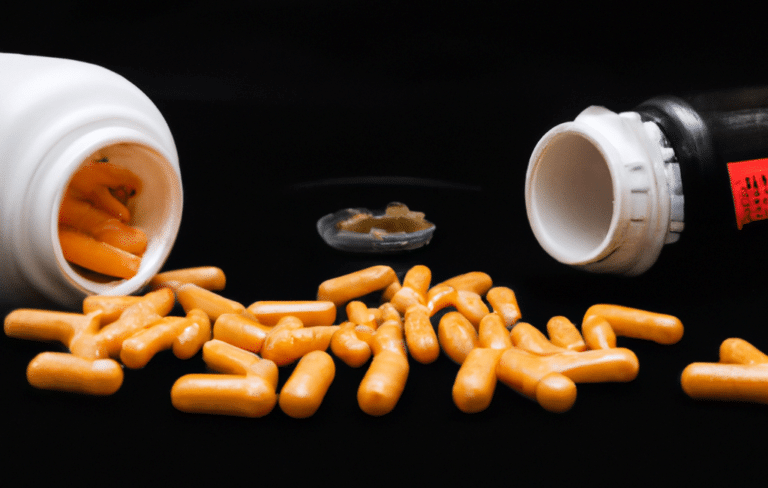Fasted Cardio: Separating Facts from Bro Science
Fasted cardio is a popular trend in the fitness community, with advocates claiming that performing cardiovascular exercise on an empty stomach leads to increased fat loss compared to exercising in a fed state. Despite its popularity, the scientific evidence supporting the benefits of fasted cardio remains inconsistent and inconclusive. This article aims to provide an in-depth examination of fasted cardio and its true scientific benefits, helping fitness enthusiasts make informed decisions about incorporating this practice into their workout routines. Our goal is to provide you references so you can judge the facts yourself. Is Bro Science the clear winner here or is real science? Does poindexter miss the point that gymbros know for a fact? You decide.
The Theory Behind Fasted Cardio
Fasted cardio is based on the premise that exercising in a fasted state, usually after an overnight fast or several hours without eating, will increase the body’s reliance on fat stores for energy. In theory, this is because glycogen, the body’s primary source of energy during exercise, is depleted during a fast, forcing the body to tap into fat reserves to fuel physical activity.
The rationale behind fasted cardio’s fat-burning potential is rooted in the process of lipolysis (fat breakdown) and fatty acid oxidation (fat utilization). When insulin levels are low, as is the case during a fast, hormone-sensitive lipase (HSL) is activated, promoting lipolysis and making fatty acids available for oxidation (1).
The Scientific Evidence
Several studies have been conducted to evaluate the effectiveness of fasted cardio for fat loss. However, the findings have been mixed, with some studies showing increased fat oxidation during fasted cardio, while others demonstrate no significant difference between fasted and fed states.
Studies Supporting Fasted Cardio
Some research has suggested that performing cardio in a fasted state can increase fat oxidation rates. A study by Van Proeyen et al. (2011) found that fasted training led to higher rates of fat oxidation and greater overall weight loss compared to exercising in a fed state (2). Similarly, a study by De Bock et al. (2005) reported increased reliance on fat stores for energy during fasted cardio, with a subsequent increase in muscle oxidative capacity (3).
Studies Challenging Fasted Cardio
Contrary to the studies supporting fasted cardio, other research has found no significant difference in fat oxidation between fasted and fed cardio sessions. A study by Schoenfeld et al. (2014) investigated the effects of fasted and fed cardio on body composition in resistance-trained individuals and concluded that there was no difference in fat loss between the two groups (4). Similarly, a study by Paoli et al. (2011) found that fat oxidation rates were not significantly different between fasted and fed cardio sessions (5).
Factors Affecting Fasted Cardio Effectiveness
The inconsistencies in the scientific literature may be due to several factors, such as individual differences in metabolism, fitness levels, and exercise intensity. Additionally, the type of cardio performed may play a role in determining the effectiveness of fasted cardio for fat loss.
Metabolic Differences and Fitness Levels
Individual metabolic differences and fitness levels can influence how the body utilizes energy during exercise, potentially affecting the efficacy of fasted cardio. For instance, trained individuals may have a higher capacity for fat oxidation than untrained individuals, regardless of whether they exercise in a fasted or fed state (6).
Exercise Intensity
The intensity of the cardio session may also influence the effectiveness of fasted cardio. Low to moderate-intensity exercise may promote greater fat oxidation in a fasted state compared to high-intensity exercise, which relies more heavily on carbohydrates for energy (7).
Type of Cardio
The type of cardio performed may also impact the effectiveness of fasted cardio. Steady-state cardio, such as walking or jogging, may promote greater fat oxidation in a fasted state compared to high-intensity interval training (HIIT), which relies more on carbohydrates for energy (8).
The Bigger Picture: Total Energy Balance
While fasted cardio may increase fat oxidation rates in some cases, it is essential to consider the bigger picture of total energy balance. Ultimately, weight loss and fat loss result from maintaining a negative energy balance, where energy expenditure exceeds energy intake. Whether an individual chooses to perform cardio in a fasted or fed state, the overall energy balance will be the most significant determinant of fat loss.
Practical Considerations and Recommendations
When considering incorporating fasted cardio into a workout routine, it is essential to weigh the potential benefits against potential drawbacks. Some individuals may find that fasted cardio helps them feel more energized and focused, while others may experience dizziness, lightheadedness, or decreased performance due to low blood sugar.
to one’s body and not ignore feelings of extreme fatigue or weakness during fasted cardio, as this could lead to injuries or other health issues. It may be beneficial to start with lighter, low-impact activities like walking or cycling at a moderate pace when beginning a fasted cardio routine.
For those who prefer to eat before a workout, a light meal or snack consisting of easily digestible carbohydrates and a small amount of protein can provide the necessary energy without causing discomfort or sluggishness during the workout.
Ultimately, whether fasted cardio is beneficial will depend on individual preferences, goals, and how one’s body responds to exercising in a fasted state. It is always recommended to consult with a healthcare provider or a registered dietitian before making significant changes to one’s exercise or dietary habits.
In Closing
The concept of fasted cardio has been a topic of debate among fitness enthusiasts and experts. While some studies suggest that fasted cardio could potentially increase fat oxidation rates and aid in weight loss, others show no significant differences compared to fed cardio. The variation in findings is likely due to several factors, including individual metabolic differences, fitness levels, exercise intensity, and type of cardio performed.
Most importantly, it is crucial to remember that regardless of when cardio is performed, the key to weight loss and fat loss is maintaining a negative energy balance over time, where energy expenditure exceeds energy intake. Furthermore, the decision to perform fasted cardio should take into account personal preferences, goals, and individual responses to exercising in a fasted state.
As the debate continues, fitness enthusiasts and professionals alike must continue to question and challenge the often-accepted wisdom of bro science, seeking evidence-based information to guide their fitness journeys. While the world of fitness continues to evolve, it’s essential that we base our practices on solid scientific evidence rather than anecdotal claims or bro science. As we’ve seen, fasted cardio isn’t the magic bullet for fat loss that it’s often made out to be. Instead, a well-rounded exercise regimen, a balanced diet, and a caloric deficit remain the most effective strategies for fat loss.
Whether you choose to do fasted cardio or not, it’s important to do what works best for you and your body. As always, it’s recommended that you consult with a healthcare provider or a registered dietitian before making significant changes to your exercise or dietary habits. Remember, fitness is not one-size-fits-all, and what works best for one person may not be the best approach for another.
The bottom line is this: Seek to understand the science behind fitness practices, question the status quo, and make informed decisions that support your health and fitness goals. The goal is not only to debunk the myths of bro science but to promote a culture of curiosity, critical thinking, and evidence-based practice in fitness. Through education, we can empower ourselves to make choices that align with our individual health goals and the science that supports them.
Disclaimer: This article is intended for informational purposes only and is not meant to serve as professional medical or fitness advice. The information provided should not be used for diagnosing or treating a health problem or disease. It is not a substitute for professional care or consultation with qualified healthcare or fitness professionals. If you have concerns about your health or fitness, please consult with a healthcare or fitness professional before making any changes to your training, nutrition, or lifestyle. The author and publisher disclaim any liability or responsibility for any loss, damage, or injury that may occur as a result of following the information provided in this article.
References
- Horowitz, J. F., & Klein, S. (2000). Lipid metabolism during endurance exercise. The American Journal of Clinical Nutrition, 72(2), 558S-563S.
- Van Proeyen, K., Szlufcik, K., Nielens, H., Ramaekers, M., & Hespel, P. (2011). Beneficial metabolic adaptations due to endurance exercise training in the fasted state. Journal of Applied Physiology, 110(1), 236-245.
- De Bock, K., Richter, E. A., Russell, A. P., Eijnde, B. O., Derave, W., Ramaekers, M., … & Hespel, P. (2005). Exercise in the fasted state facilitates fibre type-specific intramyocellular lipid breakdown and stimulates glycogen resynthesis in humans. The Journal of Physiology, 564(Pt 2), 649-660.
- Schoenfeld, B. J., Aragon, A. A., Wilborn, C. D., Krieger, J. W., & Sonmez, G. T. (2014). Body composition changes associated with fasted versus non-fasted aerobic exercise. Journal of the International Society of Sports Nutrition, 11(1), 54.
- Paoli, A., Marcolin, G., Zonin, F., Neri, M., Sivieri, A., & Pacelli, Q. F. (2011). Exercising fasting or fed to enhance fat loss? Influence of food intake on respiratory ratio and excess postexercise oxygen consumption after a bout of endurance training. International Journal of Sport Nutrition and Exercise Metabolism, 21(1), 48-54.
- Achten, J., Gleeson, M., & Jeukendrup, A. E. (2002). Determination of the exercise intensity that elicits maximal fat oxidation. Medicine & Science in Sports & Exercise,34(1), 92-97.
- 7. Romijn, J. A., Coyle, E. F., Sidossis, L. S., Gastaldelli, A., Horowitz, J. F., Endert, E., & Wolfe, R. R. (1993). Regulation of endogenous fat and carbohydrate metabolism in relation to exercise intensity and duration. American Journal of Physiology-Endocrinology and Metabolism, 265(3), E380-E391.
- Boutcher, S. H. (2011). High-intensity intermittent exercise and fat loss. Journal of Obesity, 2011.








